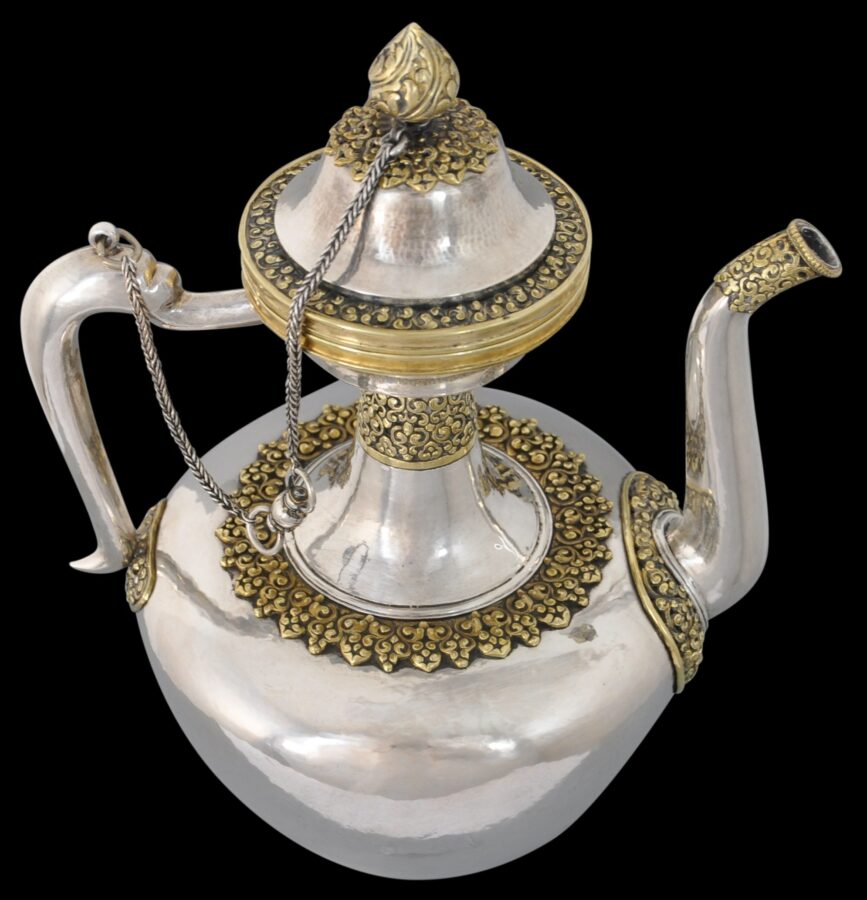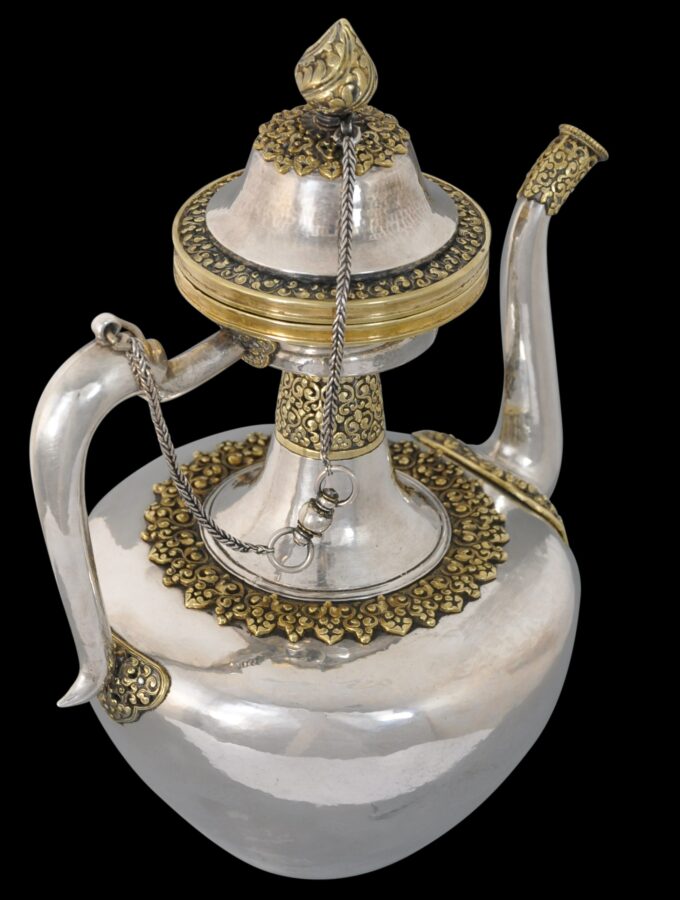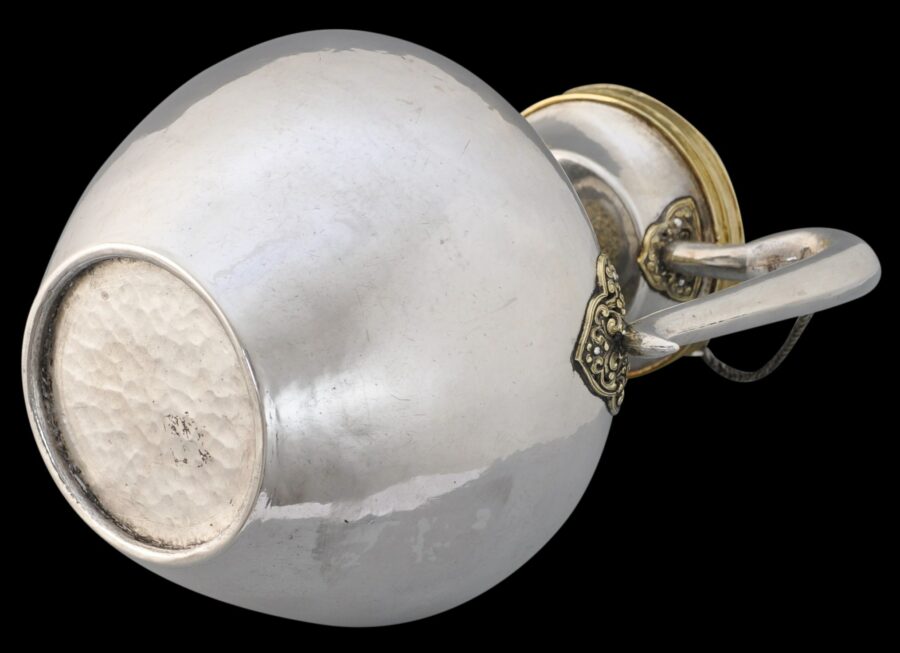This very beautiful, elegant ewer or teapot intended for yak butter tea, has been fashioned from hand-hammered, high-grade silver. Finely-worked and pierced gilded silver mounts have been applied to the collar, neck, the area from where the spout is emitted, the rim of the mouth, the lid, and the end of the spout, providing a pleasing contrast with the plain, unembellished silver of the rest of the tea pot.
A fine silver chain with a well-cast central silver bead connects the lid to the handle. The lid is domed and surmounted by a gilded, chased, silver lotus bud finial.
Possibly the teapot was made in Kongpo (‘the country of ravines’) a region of Tibet that bordered Bhutan which was known for the great skills of its sword makers and silversmiths. Many of the items produced in this area were destined for the Bhutan market.
The ewer was collected by (then) Major R.L. Vance, probably in 1927, when he accompanied Lt Col. & Mrs Bailey to Bhutan during an official visit for the installation ceremony of the second Gongsa of Bhutan, Jigme Wangchuck. (Bailey was Britain’s Political Officer for Sikkim and Tibet, and was stationed at Gangtok in Sikkim.) Vance also serve as Medical Officer in Gyantse, Tibet, where the British maintained a military garrison.
It is likely that the teapot was used by a noble – or commissioned by one. Often lavish teapots were donated to important monasteries in Tibet and Bhutan as acts of merit. Thurman and Weldon (1999, p. 54) mention, for example, that the Tashi Lhunpo monastery was said to have used some two hundred large silver teapots simply to serve its resident monks.
The teapot is in excellent condition.
References
McKay, A., British-Indian Medical Service Officers in Bhutan, 1905-1947: A Historical Outline, Centre for Bhutan Studies, 2013.
Reynolds, V. et al, From the Sacred Realm: Treasures of Tibetan Art from the Newark Museum, Prestel, 1999.
Thurman, R., & D. Weldon, Sacred Symbols: The Ritual Art of Tibet, Sotheby’s/Rossi & Rossi, 1999.














